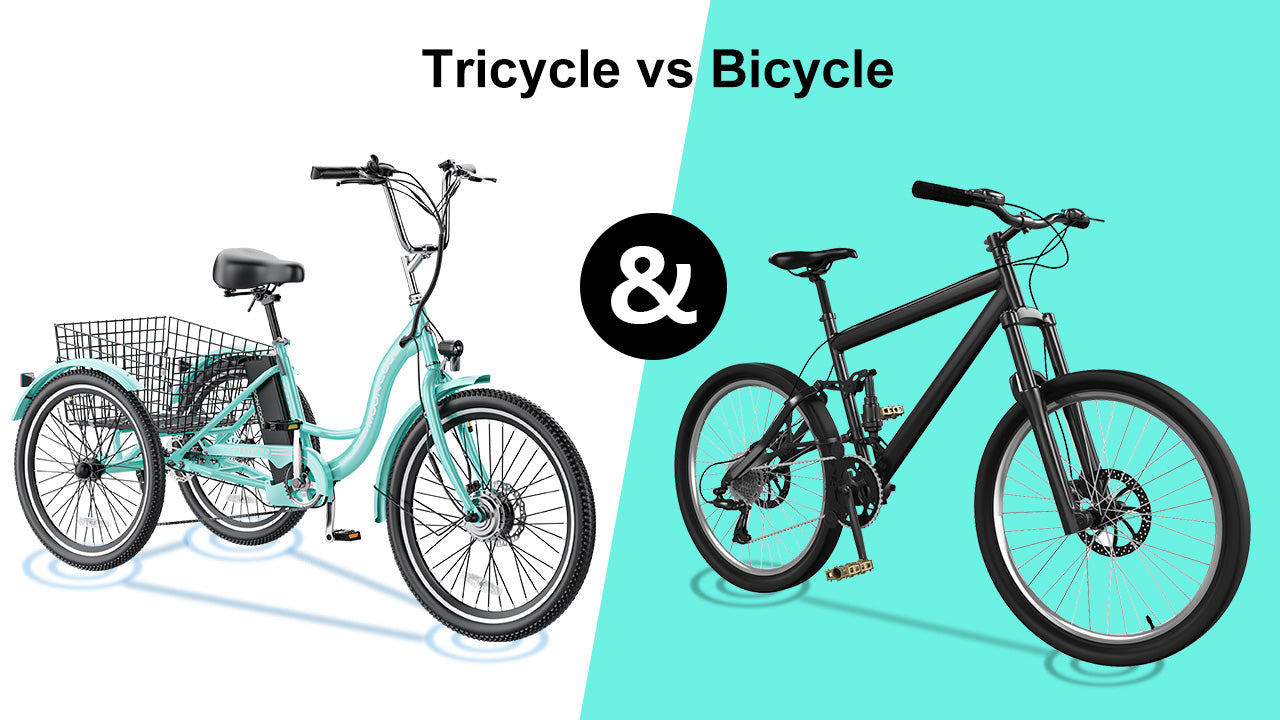Navigation
- Introduction
- Stability and Ride Comfort
- Cargo Capacity and Versatility
- Maneuverability and Speed
- Price and Maintenance
- Conclusion
Introduction
With a globally recognized shift toward more environmentally-friendly modes of transportation, electric vehicles have taken center stage. Notably, electric trikes and electric bikes have grown in popularity among urban commuters and recreational riders. This comprehensive guide will delve into the critical disparities between these two options, and assist you in ascertaining which choice aligns optimally with your specific requirements.

Stability and Ride Comfort
In comparing electric trikes and electric bikes, one primary differentiation lies in their respective levels of stability. Electric trikes, with their three-wheel structure, provide superior stability compared to two-wheeled electric bikes. This stability is advantageous for riders who face challenges maintaining balance on a traditional bike, including seniors, individuals with specific disabilities, and novice riders.
Besides superior stability, electric trikes often boast a more comfortable riding experience. They typically feature wider seats, a more upright riding position, and occasionally even integrated suspension systems. Such features are desirable for riders who find discomfort on a standard bike seat or those who struggle with the bent-over riding position of conventional bikes.
Conversely, electric bikes offer a ride that is both familiar and sporty. For individuals accustomed to conventional bikes, an electric bike allows a seamless transition to electrically-assisted cycling. Additionally, electric bikes offer an array of styles to suit individual needs and preferences, including mountain bikes, road bikes, and folding bikes.
While the stability of electric bikes may not rival that of electric trikes, contemporary models often feature wider tires, sophisticated suspension systems, and ergonomic designs that enhance ride comfort and stability.

Cargo Capacity and Versatility
When it comes to transporting cargo, electric trikes have a clear edge. Owing to their larger frames and an extra wheel, these trikes can house considerable cargo spaces such as baskets, rear storage compartments, or even customized platforms. This ample storage capacity makes them an ideal choice for riders who need to transport groceries, work equipment, pets, or children. Additionally, some electric trikes boast convertible designs, which transform cargo areas into comfortable passenger seats.
Although electric bikes may offer some cargo capacity in the form of panniers, racks, and frame-mounted bags, they generally fall short of the storage solutions provided by electric trikes. However, the increasing popularity of cargo e-bikes designed for larger loads is narrowing this gap. These bikes feature reinforced frames, robust wheels, and superior braking systems to handle the extra weight. While not as spacious as electric trikes, cargo e-bikes offer a feasible alternative for those who value both cargo capacity and two-wheel agility.

Maneuverability and Speed
While electric trikes stand out in terms of stability and cargo capacity, they exhibit certain limitations in maneuverability and speed owing to their larger size and an extra wheel. Their heavier structure can influence the top speed and acceleration negatively. However, recent advancements in the design of electric trikes, integrating efficient motors and lightweight materials, are enhancing their speed capabilities and overall maneuverability.
In contrast, electric bikes are characterized by their lighter frames and agile handling. Their streamlined design and responsive handling make them well-suited for navigating bustling urban environments or sinuous trails. Furthermore, their lower weight and efficient motor systems typically enable higher top speeds and quick acceleration.
Price and Maintenance
Electric trikes generally bear a higher price tag than electric bikes due to the extra materials and components needed for the third wheel. However, this investment can be justified if the attributes of an electric trike align with your needs and priorities. While the maintenance for electric trikes parallels that of electric bikes, the extra wheel and components may require more comprehensive upkeep, potentially leading to higher costs over time.

Conclusion
The decision between an electric trike and an electric bike is fundamentally dependent on your personal requirements, preferences, and riding style. An electric trike might be the optimal choice if stability, comfort, and cargo capacity top your list of priorities. On the other hand, an electric bike might prove more suitable if speed, maneuverability, and a familiar riding experience hold more weight for you. Both electric trikes and electric bikes offer an exceptional means to reduce your carbon footprint, economize on transportation costs, and engage in outdoor activities. Regardless of the option you choose, you are making a substantial stride toward a greener, healthier lifestyle.



Leave a Comment
This site is protected by hCaptcha and the hCaptcha Privacy Policy and Terms of Service apply.